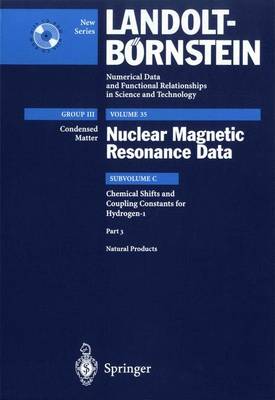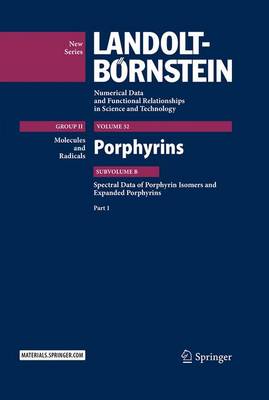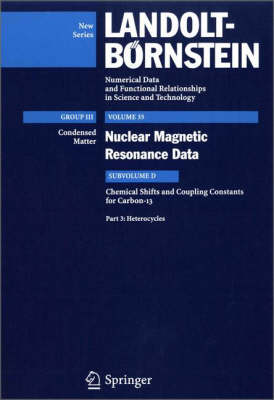Landolt-Boernstein: Numerical Data and Functional Relationships in Science and Technology - New
3 total works
35C3
Nuclear Magnetic Resonance (NMR) is based on the fact that certain nuclei exhibit a magnetic moment, orient by a magnetic field, and absorb characteristic frequencies in the radiofrequency part of the spectrum. The spectral lines of the nuclei are highly influenced by the chemical environment i.e. the structure and interaction of the molecules. NMR is now the leading technique and a powerful tool for the investigation of the structure and interaction of molecules. The present Landolt-Boernstein volume III/35 "Nuclear Magnetic Resonance (NMR) Data" is therefore of major interest to all scientists and engineers who intend to use NMR to study the structure and the binding of molecules. Volume III/35 "NMR-Data" is divided into several subvolumes and parts. Subvolume III/35A contains the nuclei 11B and 31P, subvolume III/35B contains the nuclei 19F and 15N, subvolume III/35C contains the nucleus 1H, subvolume III/35D contains the nucleus 13C, and subvolume III/35E contains the nucleus 17O. More nuclei will be presented later.
32B2
Porphyrins - Spectral Data of Porphyrin Isomers and Expanded Porphyrins
by M.P. Dobhal
The porphyrins are an important class of naturally occurring macrocyclic compounds that play a very important role in the metabolism of living organisms. They have a universal biological distribution and were involved in the oldest metabolic phenomena on earth. Without porphyrins and their relative compounds, life as we know it would be impossible and therefore the knowledge of these systems and their excited states is essential in understanding a wide variety of biological processes, including oxygen binding, electron transfer, catalysis, and the initial photochemical step in photosynthesis. The objective of this volume is to present a full and critical spectral data coverage of the entire major fields relating to porphyrin isomers and expanded porphyrins, their precursors, catabolic derivatives, and related systems electronically.
35D3
Nuclear Magnetic Resonance (NMR) is based on the fact that certain nuclei exhibit a magnetic moment, orient by a magnetic field, and absorb characteristic frequencies in the radiofrequency part of the spectrum. The spectral lines of the nuclei are highly influenced by the chemical environment i.e. the structure and interaction of the molecules. NMR is now the leading technique and a powerful tool for the investigation of the structure and interaction of molecules. The present Landolt-Börnstein volume III/35 Nuclear Magnetic Resonance (NMR) Data is therefore of major interest to all scientists and engineers who intend to use NMR to study the structure and the binding of molecules. Volume III/35 ''NMR-Data'' is divided into several subvolumes and parts. Subvolume III/35A contains the nuclei B-11 and P-31, subvolume III/35B contains the nuclei F-19 and N-15, subvolume III/35C contains the nucleus H-1, subvolume III/35D contains the nucleus C-13, subvolume III/35E contains the nucleus O-17, and subvolume III/35G contains the nucleus Se-77. More nuclei will be presented later.


